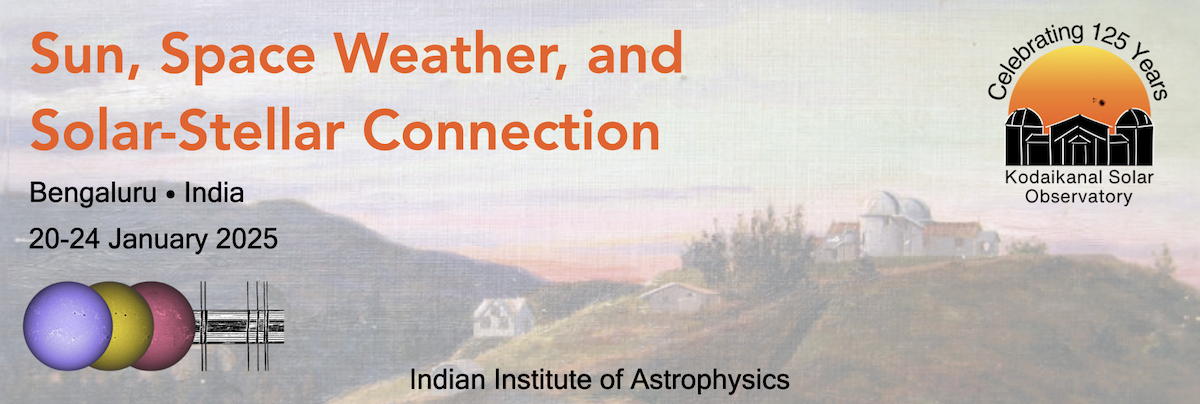Speaker
Description
The coronal magnetic field (B) is predominant in forming structures such as streamers, holes, etc., and in determining their spatio-temporal evolution. Its routine estimation will most likely provide clues/answers to several unsolved problems in solar physics and, therefore, gain significance among solar physicists. Extrapolating the Photospheric magnetic field strength using the Potential Field Source Surface (PFSS) model is one of the current approaches to determining B since direct measurements are currently unavailable. High-resolution circular polarization observations in the 1-20 GHz frequency range help estimate B above active regions (r ≲ 1.05 Ro; where ‘r’ is heliocentric distance and Ro = Photospheric radius), whereas spectro-polarimetric observations using coronal emission lines help occasionally in the height range of 1.05 ≲ r ≲ 1.2 Ro. Estimating it above 1.2 Ro is difficult because the strength is feeble (~ Gauss). Researchers use Faraday rotation measurements to determine B, especially in the 3 Ro ≲ r ≲ 15 Ro height range. In the intermediate range (1.2 ≲ r ≲ 3.0 Ro), spectro-polarimetric observations of fortuitous radio bursts at meter wavelength and above are used. These radio bursts are occasional and are enhanced by associated solar activity. Given the above, the estimate of B in the quiet coronal regions in a routine manner is scarce. In the recent past, theoreticians indicated the possibility of estimating B from the observed quiet coronal thermal radio emission. The foundation for this came from the magneto-ionic theory, which conveys that B makes the plasma medium anisotropic and thereby splits the original randomly polarized thermal radio emission from the corona into two orthogonal circularly polarized components (viz., the ordinary and extraordinary waves). While propagating, the magnetized plasma absorbs these two components differently due to the difference in absorption coefficients and propagation directions. So, the resultant emission has the sense of circular polarization of the dominant component and an appreciable magnitude at the meter wavelength range and above. Due to the above, we started commissioning a dedicated radio facility to routinely measure B in the quiet corona, particularly in the 1.1 - 2.0 Ro heliocentric distance range, to address the various pertinent scientific problems. For that, the existing Gauribidanur RAdioheliograPH (GRAPH) of the Gauribidanur radio observatory is being augmented to image the circularly polarized (CP) radio emission, in addition to total intensity in the 30 - 130 MHz frequency range. The necessary analog and digital receivers are being built and characterized. The computer algorithms based on the ray-tracing technique using Haselgrove equations are also being developed to reproduce the observed total and CP intensity images.
| Contribution Type | Poster |
|---|---|
| Theme | Solar Magnetism in High-Resolution |

